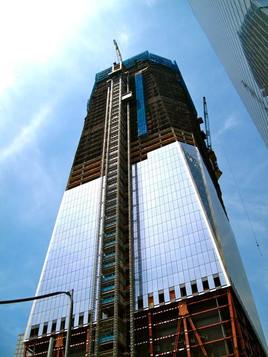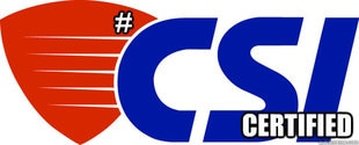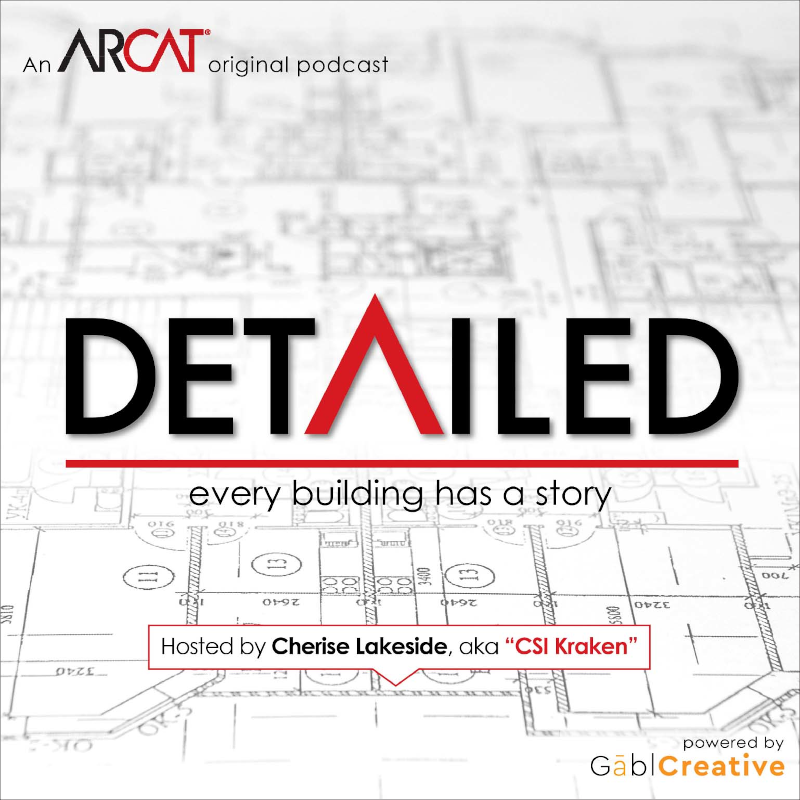|
Contributed by Roy F. Schauffele This brief article is directed to architects, specifiers, and consultants. The use and evolution of air barriers is very reminiscent of the growth of single-ply roofing technology. The larger corporate manufacturers are pouring tons of money into marketing and advertising and as I’m fond of saying, “all advertising is completely true but rarely truly complete”.
All too often, architects & specifiers rely heavily on the paid for mass produced specifications or a quick internet search and then dutifully download a set of specifications. This is okay, but they may not contain all the technical or QA items that may be needed for proper air barrier design and performance. What follows are references (suggestions) that can lead to clarity of specification interpretation, design intent, proper bidding and installation. These are not an endorsement, just references. After I have the building’s design, function and climatic conditions defined, I include the following in my specifications:
While nothing is perfect, I’ve found the above to serve me well and I hope these items are of good use to you.
12 Comments
Contributed by Eric D. Lussier Whether an emerging professional, new to your company or new to your position, personal advancement through a professional certification is a tremendous asset in more ways than one.
In the construction industry, the certifications through the Construction Specifications Institute (CSI) carry weight with many of the major players of a project – the owner, the architect, the general contractor, product representative or construction manager. CSI’s Construction Documents Technologist (CDT) program is the prerequisite to CSI’s advanced Certifications: Certified Construction Contract Administrator (CCCA); Certified Construction Specifier (CCS) and Certified Construction Product Representative (CCPR). Whether you are new to the construction industry or a 50 year veteran, the CDT program can and will help you with an overall building project. If you find yourself lost in a 1500 page, 32 division project manual, the CDT can help you understand where to find what you are looking for and just how that project unfolds from conception to delivery. I can tell you first hand how much attaining the CDT has assisted me in my job. Before I started attending my CDT study group many years back, I focused mainly on Division 9 of architectural specifications, where you can find the sport flooring that I represent. Week after week of studying and learning from the (now former) Project Resource Manual, my eyes were opened to just how much broader of a scope a project is. From project conception right through to commissioning, I was able to more thoroughly understand all of the facets and parties involved. The time has come to register for the Spring cycle of CSI certification. You can register now here. You are never alone when you work with CSI, either. Whether a member or a CDT test taker, fellow CSI members like myself are always there to help. Through blogs, Twitter, Facebook, LinkedIn, or the tried and true phone call, we’re always glad to help. David Stutzman, CSI, CCS from Conspectus. “What was my first project after graduating college with an architectural degree? A prominent design? No, measuring and documenting 65 existing buildings at Letterkenny Army Depot; calculating energy savings; estimating construction costs; and finally writing the project specifications using the Corps of Engineers master specs.” Liz O’Sullivan, CSI, CCS, CCCA: “There’s SO MUCH to learn – all of us in the construction industry are constantly learning (or should be). Much of this knowledge can ONLY be gained through experience, but not all of it has to be.A really good way to learn about how your documents may be interpreted by the users is to prepare for a CSI certification exam, starting with the CDT (Construction Documents Technologist) exam.” Read Liz’s blog: https://lizosullivanaia.com/ Tara Imani, CSI: “I’m also a CSI CDT; meaning I took the time 111 years ago, to understand how a good legal set of contract documents are put together and administered.So, as you can tell, I have a lot of education but it’s all because I thought it was important to broaden my understanding of this complex industry at that time in my career; I didn’t do it to add initials after my name!” Read Tara’s blog: http://www.indigoarchitect.com/ Randy Nishimura, AIA, CSI, CCS: "Passing the CDT examination means you have become fluent with construction project processes and communication. It means you’ve demonstrated professional commitment, credibility, and reliability to your employer, colleagues, and clients. Obtaining CDT status benefits you, your company, and your customers. Getting your CDT also means acquiring the privilege to add “CDT” after your name on your business card and resume." Read Randy's blog here: http://sworegonarchitect.blogspot.com/ Registration is open until Mid-March. Head over to www.csiresources.org/certification/csi-certification to sign up. Contributed by Ray Gaines, FCSI A series of posts I shared previously on my own blog (which can be read here) began as a commentary on day to day communications when I explored the notion of how the same words could have completely different meanings given context, tone of voice, body language and other emotional cues. It quickly evolved into a second post on graphic construction communication.
This post deals with overly verbose specifications I often see from consulting engineers who are often not versed in specification writing principles: “2.2 Materials & Equipment: standard components, of regular manufacture for this application. All systems and components shall have been thoroughly tested and proven in actual use. The commissioning requirements of this specification shall be strictly adhered to. Trane Tracer Summit ICS products are used as basis of the design. Siemens Apogee or Johnson Controls Metasys are acceptable subject to compliance with the specification” “2.5.2 Communications: The Building Controller shall reside on the network, which is the same high-speed network as any connected workstations. The Enterprise wide network shall support the Internet Protocol (IP). Local connections of the building Controller shall be on ISO 8802-3 (Ethernet). Communications shall use Annex J of ASHRAE Standard 135-95. The Building Controller shall also perform routing to a network of Custom Application and Application Specific Controllers.” The language I just quoted was written by a mechanical engineer as part of a building automation specification section. There is a problem with the fact that both paragraphs violate two of the four Cs of specification language promoted by CSI: clear, correct, complete, and concise. These two paragraphs are neither clear nor concise. Because they are unclear, I have no idea if they are correct or complete. They also appear to be combining prescriptive with performance specifications. Assuming the technical content is indeed correct, the problem can be fixed by applying some basic principles espoused by the CSI in the CSI Specifications Practice Guide. The information presented should be separated into multiple (correct) locations to comply with CSI SectionFormattm. Portions of both paragraphs should appear in PART 1 GENERAL, and part of the second should be in PART 3 EXECUTION. The remainder is correctly located in PART 2 PRODUCTS, but needs to be broken up into shorter statements using streamlined language in smaller subparagraphs to allow the reader to more easily access and understand the information. The first paragraph could appear as follows: 2.2 Materials & Equipment 2.2.1 Manufacturers
2.2.2 Basis of Design: Trane Tracer Summit ICS The remainder of the non-superfluous information from this paragraph should appear in PART 1 GENERAL. I could rewrite the second paragraph as well, but you get the idea. Adherence to CSI principles would facilitate communication of the information to the bidders and eventually to the contractor. Remember, communication occurs when the reader/listener understands the intent of the writer/speaker. When the information is correctly stated and presented, it is understandable by all the parties to the construction process. The CSI Education and Certification Programs are an important first step to better communication within the AEC industry. Contributed by Cherise Lakeside One of the goals of Let’s Fix Construction is to bring common problems in Architecture, Engineering and Construction to the table for positive and collaborative discussion and solutions. We have complained long enough. It’s time to start fixing things.
In my humble opinion, the best way to fix something is to learn what you don’t know. Often problems are perpetuated simply because we lack a piece of the puzzle and, because nobody tells us, we keep repeating the same mistakes. The issue that I would like to address today has driven me crazy for years. What’s worse is that it is a relatively easy fix. But, we are not fixing it. If you don’t already know me, a quick background: I have worked in AEC for 30 years – In Architecture, Engineering AND Construction. This wide-ranging experience in our industry has been a gift in that I have been able to see the process from many different sides. Add to that a heavy involvement in the Construction Specifications Institute (No, they are not only about specs!) and I feel uniquely qualified to write this blog. There is a commonality in AEC, no matter what discipline in which you work. Architecture, Engineering, Construction, Manufacturing, Product Reps, Owners, etc. That commonality is project delivery processes and contract administration. It doesn’t matter who you are, you need to know the project requirements, risks, roles and responsibilities. Period. No question about it. No brainer. But, guess what? Very few in relation to the whole of our industry have this knowledge. WHAAAAAT? How in the world do you work on a project and not know this? Ummmm, we are all over the place. Let me ask you a few questions:
Can you answer these questions? Seriously, I could go on for hours listing the things that many don’t know. The important point here is that the items above and many more affect every one of you on a project, I don’t care who you are. You can’t possibly efficiently and effectively do your job without having this knowledge. Your level of risk skyrockets if you don’t know the contractual requirements of your project (or at a minimum where to look for them) and your efficiency plummets. In a “time is money” business, this is unacceptable. Now, you might be thinking something like ‘This if for the powers-that-be to understand.’ That is flawed thinking. Very, very flawed. Contributed by Randy Nishimura Change is a constant in architecture and construction. If anything, the pace of this change is accelerating. We all struggle to keep up with the latest developments in an effort to remain competitive. Our success is contingent upon how quickly we adapt in an environment buffeted by forces largely beyond our control. Survival of the fittest is a maxim always in play.
If there is another constant in our industry it is the importance of clear, concise, correct and complete construction documentation and communications. Architecture and construction are increasingly dependent upon the effective conveyance of design intent. They are likewise dependent upon the clear definition of project responsibilities and roles detailed by the forms of agreement most widely used in construction projects. It’s important and necessary for everyone — owners, architects, engineers, specifiers, general contractors, subcontractors, construction materials suppliers, and others — to understand project delivery options, standard forms of agreement, means for organizing drawings and specifications, etc. Change and the Four C’s of construction documentation are not incompatible. A key to managing the former and mastering the latter is knowledge, specifically fluency with the lingua franca of our industry. Knowledgeable employers highly value those who understand the language of construction, its underlying principles and terminology, and the critical relationships between all the participants in any design and construction undertaking. Employees who thoroughly understand this language not only survive but are more likely to thrive. They are the winners in today’s challenging and constantly changing environment. So, how can you demonstrate your construction knowledge and competence? How can you stand out in the crowd? One of the best ways is to achieve CSI's Construction Documents Technologist (CDT) status. The Construction Specifications Institute developed the CDT program decades ago to provide training in construction documentation for architects, contractors, contract administrators, specifiers, and manufacturers’ representatives. Since then, it has become the cornerstone for all of CSI’s certification programs, which presently include Certified Construction Specifier (CCS), Certified Construction Contract Administrator (CCCA), and Certified Construction Product Representative (CCPR). Passing the CDT examination means you have become fluent with construction project processes and communication. It means you’ve demonstrated professional commitment, credibility, and reliability to your employer, colleagues, and clients. Obtaining CDT status benefits you, your company, and your customers. Getting your CDT also means acquiring the privilege to add “CDT” after your name on your business card and resume. In some respects, I regard the value of the CDT as analogous to that of a liberal arts degree, in that both provide a foundation for more advanced learning. I became a CDT back in 1989, and subsequently achieved Certified Construction Specifier status a couple of years later. There’s no doubt in my mind that studying for and passing both examinations has served me very well professionally. What I learned provided me with a solid knowledge base I’ve relied upon throughout my career. I know I’m a much better architect than I might have been without the benefit of what I learned through those two certification programs. I truly believe this knowledge equipped me with the ability to better cope with the accelerating changes in our industry by ensuring I first thoroughly grasped the time-tested fundamentals of construction documentation and communications. I highly encourage any of you who are simply curious about CDT certification to seriously consider learning more about its value. Ask others besides me who have become CDTs. Or check out CSI’s YouTube channel for informational webinars about its certification programs. The webinars provide more information than I have shared here. Each webinar covers the requirements and resources needed for successful exam preparation and study. Many local CSI chapters also offer educational courses to help those interested prepare for the examinations. As the saying goes, knowledge is power. Knowledge provides a competitive edge. Give your knowledge about construction documents and communication a boost by becoming a Construction Documents Technologist. The true value of CDT certification is beyond calculation—it’s priceless. (Editors note: the next testing window for CDT & advanced certification will be Spring of 2017) |
AboutLet's Fix Construction is an avenue to offer creative solutions, separate myths from facts and erase misconceptions about the architecture, engineering and construction (AEC) industry. Check out Cherise's latest podcast
Get blog post notifications hereArchives
March 2022
Categories
All
|






 RSS Feed
RSS Feed
